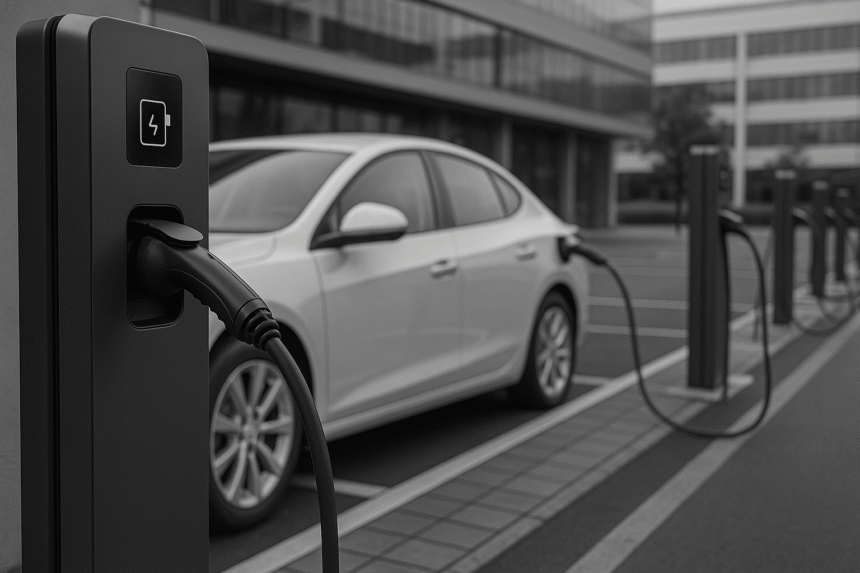EV Charging Network: Components, Setup, and Scaling
As the electric vehicle (EV) market gains momentum across the Middle East, building a robust EV charging network is becoming a strategic priority for governments and businesses alike. The term “EV charging network” refers not only to the physical chargers but also to the underlying digital systems and operational frameworks that keep the entire ecosystem running. For decision-makers looking to participate in or expand EV infrastructure, understanding how to build and scale such a network is essential.
What Is an EV Charging Network?
An EV charging network is a connected system of charging stations managed through centralized software. This includes:
- Hardware (AC and DC chargers)
- Central management platform
- Payment and billing software
- Site maintenance and technical support systems
Together, these components create a seamless experience for EV users and a scalable model for infrastructure operators.
Core Components of an EV Charging Network
1. Central Management Software
At the heart of any modern EV charging network is the Charge Point Management System (CPMS). This platform allows operators to:
- Monitor charger health and usage
- Set pricing models (flat, time-based, dynamic)
- Control user access
- Push software updates to the network
The CPMS often integrates with utility APIs to align charging activity with grid capacity.
2. Backend Billing and CRM Systems
Revenue generation in EV charging depends heavily on automated billing systems. These platforms should:
- Handle various payment models (subscription, pay-as-you-go, bundled energy credits)
- Generate user invoices
- Process loyalty discounts and government subsidies
In addition, CRM systems help operators track customer usage and respond to service inquiries, reducing churn and increasing customer satisfaction.
3. Site Management and Maintenance Protocols
Operating a charging site involves:
- Real-time diagnostics to reduce downtime
- Preventive maintenance schedules
- On-site inspections
- 24/7 customer support
The goal is to ensure maximum uptime and safety compliance, particularly when managing multiple locations across a city or region.
Setting Up Your EV Charging Network
Step 1: Site Selection and Permitting
Choose high-traffic and EV-dense areas such as malls, office parks, residential complexes, and highways. Then:
- Apply for zoning clearance
- Get electrical grid assessments
- Secure municipal approvals
Step 2: Procurement and Installation
Procure chargers that match your project requirements:
- AC Chargers (for residential and office use)
- DC Fast Chargers (for highways and public spaces)
Installation includes:
- Transformer upgrades (if required)
- Internet or SIM connectivity setup
- Integration with your CPMS
Step 3: Platform Integration
Ensure the CPMS is connected to:
- All charger types (OCPP-compliant systems are ideal)
- Payment gateways
- Mobile apps for users
- Grid demand monitoring systems
Step 4: Licensing and Launch
In the UAE, operators must comply with local regulations from DEWA (Dubai) or ADDC (Abu Dhabi). Requirements often include:
- Safety certifications
- Technical compliance audits
- Data reporting obligations
Once approved, your site can go live with marketing efforts targeting EV drivers in your region.
Scaling Your EV Charging Network
Growth Strategy by City or Sector
Growth should align with urban EV adoption and government planning. For example:
- Urban expansion: Focus on smart city zones with EV penetration targets
- Sector-specific rollout: Target fleets (taxis, logistics, public transport) and residential developments
Partnering With Real Estate and Fleet Owners
Partnerships help scale faster:
- Landlords provide parking space
- Fleets ensure consistent utilization
- Energy companies offer renewable grid tie-ins
Performance Metrics to Track
- Average session duration
- Uptime rate
- Cost per kilowatt-hour sold
- Customer retention and app usage
These KPIs help refine your operating model and attract further investment.
Conclusion: Future-Proofing EV Charging Networks
As EV adoption rises, a well-designed EV charging network becomes a national infrastructure asset. From digital billing to preventive maintenance, each layer must be designed with scale, efficiency, and user experience in mind. Whether you’re launching a pilot or expanding city-wide, building the right technical and business backbone is what sets leading operators apart.



Leave a Reply